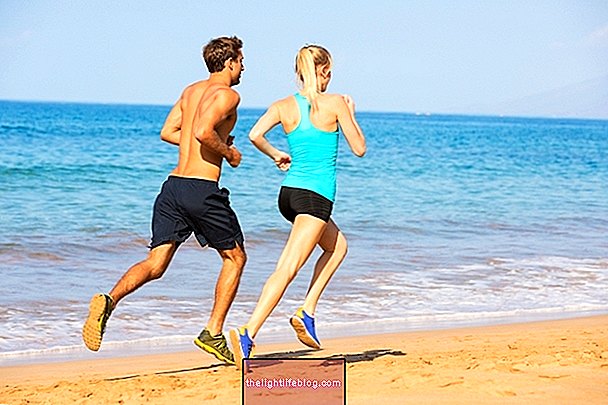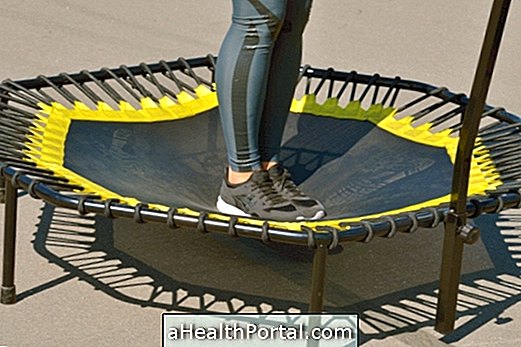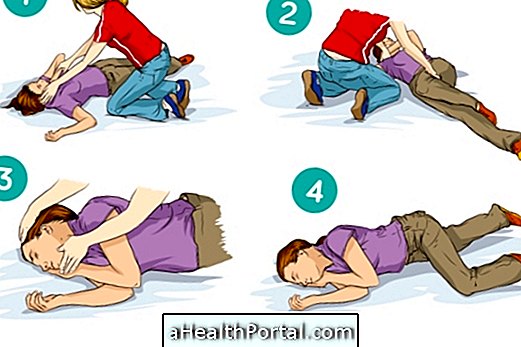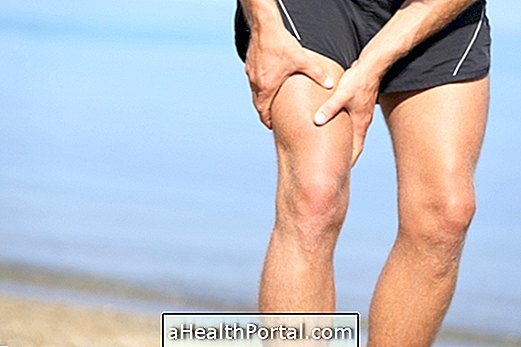The benefits of running on the beach include improved breathing capacity and cardiac conditioning. Other benefits are:
- Weight loss because about 500 calories are lost every hour;
- Thicken your legs, especially when running on soft sand;
- Fight the cellulite of the thighs and glutes because it demands a lot of this musculature;
- Improve the balance and perception of the body itself, with less overload on the joints;
- Strengthen the immune system, leaving the body strong against microorganisms;
- Improve mood by releasing endorphins into the bloodstream and contact with nature reduces stress.
Running on soft sand requires more effort to get your foot out of the sand and to keep pace, so this is a sport that is not suitable for sedentary people and that requires certain care. Some situations that can happen are twisting the foot or feeling a sharp pain in the lateral part of the abdomen, popularly known as "donkey pain".

Care when running on the beach
Some important precautions to be taken when running on the beach are:
- Run in the early morning or late afternoon, when the temperature is cooler;
- Wear a good running shoe that absorbs the impact and is malleable (when running on hard sand);
- Take a bottle of water or an isotonic drink to replace the liquids and minerals lost in sweat;
- Apply sunscreen in all areas exposed to the sun, to avoid skin lesions;
- Wear a hat or cap and sunglasses to protect your face and eyes.
Another precaution that can not be left out is always to use a frequency meter to observe the behavior of the heart, creating physical conditioning and also to achieve weight loss.
Here's how to calculate your heart rate for weight loss.
Ceasing to be sedentary
Whoever wants to leave sedentary lifestyle should start slowly. The ideal is to start with walks on the asphalt and gradually tighten your pace. After a few weeks, you can start running, but slowly and, as the race becomes easier and easier, you can leave the asphalt for sand on the beach.
How to start running on the beach
To start running on the beach, it is more advisable, in the first weeks, to run closer to the water, where the sand is harder, but paying attention to the slope of the terrain. The flatter it is, the better. Following the exercise, you can start running on soft sand, but this requires care. It is important to focus your attention on running because, as the soft sand is more uneven, the risk of twisting your foot and causing injuries to your hips and lumbar spine is greater.
The running time depends on the individual's goal and time availability. When the goal is to lose weight because you are overweight, the race should be at least 20 minutes long, with the first 5 minutes warming up and the last 5 minutes cooling off. In addition, it is important to stretch before and after the run. Read more at: 7 tips for running when you are overweight.
If you're excited to run on the beach, don't forget that you need to hydrate yourself, so here's a recipe for a natural isotonic prepared by nutritionist Tatiana Zanin:

Here are some stretches you can do:
- Stretching exercises for legs
- Stretching exercises for walking
Was this information helpful?
Yes No
Your opinion is important! Write here how we can improve our text:
Any questions? Click here to be answered.
Email in which you want to receive a reply:
Check the confirmation email we sent you.
Your name:
Reason for visit:
--- Choose your reason --- DiseaseLive betterHelp another personGain knowledge
Are you a health professional?
NoMedicalPharmaceuticalsNurseNutritionistBiomedicalPhysiotherapistBeauticianOther



















.jpg)
